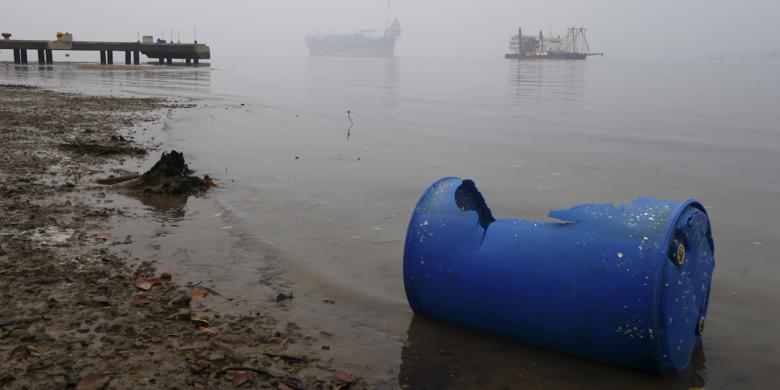
OPEC'S PROGNOSES

The Organization of the Petroleum Exporting Countries' bet that oil demand will steadily rise in 2016 has a looming problem: Consumption is notoriously difficult to predict.
Since 2010, the oil market's three biggest supply-and-demand forecasters—the International Energy Agency, the U.S. Energy Information Administration and OPEC itself—have rarely been accurate in their short-term forecasts of demand growth, a Wall Street Journal analysis found.
For instance, in December last year, the EIA predicted oil demand would increase by 900,000 barrels a day in 2015. But in its latest revision it said consumption increased by 1.4 million barrels a day this year.
On average, the agencies' December year-ahead forecasts have missed their later assessments of actual consumption by 600,000 barrels a day since 2010, according to the Journal analysis.
The mistaken prognoses highlight the challenges OPEC faces on Friday when the group’s ministers gather in Vienna for a potentially contentious meeting. Some in OPEC want to cut output in a bid to boost sagging prices, while Saudi Arabia has indicated keeping the spigots open will drive out producers thought to need high prices to pump. The group is unlikely to change course, analysts say.
Underpinning OPEC's policy is faith that rising consumption will ultimately soak up the extra supply in the market and drive prices higher again.
In November, Saudi Arabia's deputy oil minister Prince Abdulaziz bin Salman told a conference in Qatar that a key difference between the current downturn in oil prices and the historic slump in the 1980s is that this time around demand continues to grow. A week later, oil minister Ali al-Naimi told an industry gathering in Bahrain that the oil sector needs to continue, if not increase, investment to expand capacity in order to keep up with rising consumption.
If that doesn't happen, it would be bad news for OPEC.
"The signals are that the Saudis won't cut or change policy unless there is a meaningful negative demand shock," said Theepan Jothilingam, European head of oil and gas equity research at Japanese investment bank Nomura International PLC.
The IEA, EIA and OPEC have said oil demand will rise by between 1.2 and 1.4 million barrels a day next year, a healthy amount but slower than 2015, when demand grew by as much as 1.8 million barrels a day, according to the agencies' forecasts.
OPEC declined to comment on its demand analysis.
Demand predictions are often wrong because they are a cocktail of assumptions based on often incomplete data and variables such as global economic growth and shifts in the oil price and foreign exchange rates. Even retrospective data isn't fixed and even years later assessments of global oil demand can be tweaked.
"It's an art more than a science in many ways—that's economics," said Matt Parry, senior oil market analyst at the IEA, a Paris-based group that monitors energy trends for industrialized nations.
"You have to make a lot of assumptions that could of course be wrong," he added. "Hopefully the errors sort of cancel each other out."
In 2015, the drop in prices—sharper and lengthier than many had expected—has proved a major challenge for forecasters to anticipate and interpret. Twelve months ago few would have predicted the price of oil would be where it is now and typically such steep declines have been associated with an economic slow down and accompanied by a sharp contraction in consumption. Instead, consumption soared this year.
"It's really thrown us for a loop in 2015," said EIA senior economist Tancred Lidderdale.
The agencies' demand-growth forecasts are trying to predict fairly small fluctuations—often between 1% and 2%—in a giant market with about 95 million barrels of oil sold daily. But such shifts still impact the market and can be significant for anyone using these forecasts to define their trading or hedging strategy. It isn't just the EIA, IEA and OPEC; investment banks and consultancies often get their demand predictions wrong.
"We pay a lot of money for these guys, I wish they'd get it right once in awhile," said Ian Taylor, chief executive of Vitol Group, the world's largest oil trader, at a conference this year.
The forecasters have got it very wrong before.
The IEA in December 2013 predicted oil consumption would rise a solid 1.2 million barrels a day in 2014. A year later, its assessment had halved, and oil prices were in free fall.
The slower-than-expected demand growth came at a time when crude production was booming and helped push the oil price into an 18-month slump from which it has yet to recover. The impressive ramp up in oil supply was well-flagged—in part because much of the increase came from the U.S. where production data is relatively transparent—but the sluggishness in demand took many by surprise.
"I think there's not been enough attention to be honest on what really happened in demand last year," Mr. Taylor of Vitol said.
In a shift from the past, some demand analysts say their job isn't currently as tough as for oil market watchers trying to predict supply—historically governed by the fairly predictable course of big long-term projects.
The rise of more short-term and flexible shale oil production in the U.S. and the prospect of geopolitical wild cards like the return of Iranian oil barrels make the picture for next year seem particularly difficult to read.
---
More:




